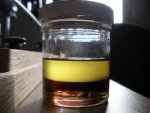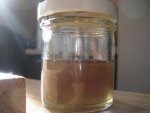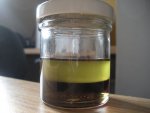jesusgatos
Active member
- 2,689
- 28
- 38
- Location
- on the road - in CA right now
Yeah, I know that even a little bit of water in DOT 3/4 fluid will lower the boiling point substantially. But water's going to get into anything that's vented to atmosphere, right? And if water is heavier/denser than DOT 5 fluid, where is it going to settle? And then what's it going to do? Instead of the water being suspended in the fluid (like it would be in DOT 3/4), wouldn't you imagine that it would be more likely to cause corrosion/rust when it settles at those low-points? And if those low-points are the wheel cylinders, we're talking about a much lower boiling point than even contaminated DOT 3/4 fluid, right? Please understand, I'm not trying to be argumentative. I appreciate your input and would like to know if any of the assumptions that I'm making (based on what I've read) are off-base. I can see why DOT 5 fluid is/was attractive to the military and antique car enthusiasts, but I'm building a truck that will be driven often and serviced regularly.





